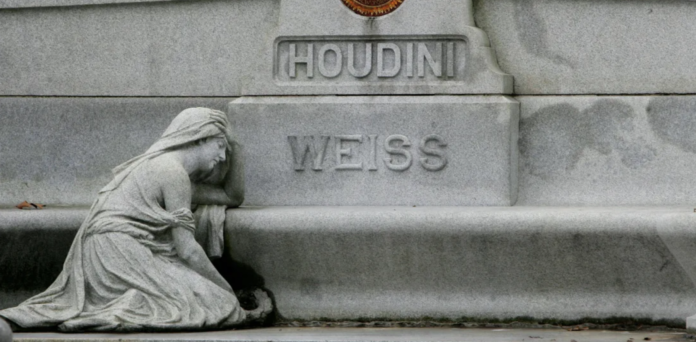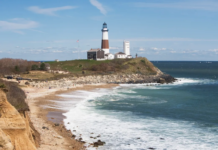1. POLLS OPEN ON THE 11TH AMERICAN PRESIDENTIAL ELECTION // HALLOWEEN 1828
How’s this for a nightmare: 34 days of Election Day.
No matter how horrifying our presidential politics get in 2016, at least the nation can look forward to the end of the campaign season once the polls close on November 8. This wasn’t always the case in America. Before the 1848 election, states were allowed to hold their voting at any time over several weeks. Back then—when news traveled slowly and the nation’s harvesting patterns had an even stronger influence on the political schedule—federal law gave states 34 days to conduct the election before the Electoral College got together on the first Wednesday of December.
Voting in those early contests obviously tended to kick off in late October or early November, but only two—1800 and 1828—saw polls open on All Hallows’ Eve. The latter, 1828, was a particularly nasty (not to mention historically significant) election that saw the populist outsider candidate, Andrew Jackson, knock out the incumbent East Coast elite, John Quincy Adams. In some ways, this rematch of the 1824 presidential election cast the die for the politics we have today.
The nation was still young, but the 1828 contest firmly established the two party system and saw the debut of deeply personal attacks and concerted rumormongering—Adams supporters labeled Jackson, the eventual winner, a war criminal, and called his wife Rachel an “adulteress.” Fueling the increase in vitriol was the proliferation of party-affiliated press organs, which relied heavily on innuendo and conspiracy. These were not newspapers, but rather the 19th century equivalent of Facebook groups that share memes.
2. HUNDREDS OF CREEK INDIANS KILLED IN THE WRECK OF THE MONMOUTH // HALLOWEEN 1837
With strict propriety of language, we might call the awful catastrophe about to be particularized, a massacre, a wholesale assassination, or anything else but an accident.
— Lloyd’s Steamboat Directory, And Disasters on the Western Waters (1856)
The situation was already dire for the 700 or so members of the Creek tribe crammed onto the Monmouth on a very dark October 31, 1837. After most of the Creek had been forcibly deported from their homeland in the Southern United States following the “Creek Indian War of 1836,” a few had been allowed to stay behind while their families were helping fight the Seminoles in Florida. After the fighters returned, the remaining Creek were put on boats to take them up the Mississippi, including one called the Monmouth.
As the overcrowded Monmouth steamed north of Baton Rouge, it crashed into another steamship, the Warren, which was towing another boat called the Trenton. According to Lloyd’s Steamboat Disasters, “such was the violence of the concussion, that the Monmouth immediately sunk.” It is estimated that at least half of the Monmouth’s passengers perished in the catastrophe, though records are scarce because no government agencies ever investigated the incident.
3. NEVADA IS ADMITTED AS THE 36TH STATE // HALLOWEEN 1864
For obvious reasons, the states that left the Union during the American Civil War tend to get more attention than the ones that joined the United States during the conflict. Nevada is one of only two—West Virginia is the other—to attain statehood while the North and South were fighting. (Thus Nevada’s claim as the “battle born” state.)
One common explanation is Abraham Lincoln and the Union needed the Silver State’s mineral wealth. Not exactly. Nevada was already a Union territory, so Abe had the silver. Besides, by late 1864, the war was nearly won. What Lincoln actually needed was Nevada’s votes—both in the upcoming 1864 Presidential Election and for the push to end slavery with ratification of the 13th Amendment.
4. BRITAIN BREAKS THE OTTOMANS AT THE BATTLE OF BEERSHEBA // HALLOWEEN 1917
One of the Great War’s lesser known clashes, the Battle of Beersheba is particularly revered by cavalry enthusiasts and Australian World War I buffs. That’s because, as the sun set on a day of fierce skirmishes in the Negev Desert, a brigade of Aussie light horsemen staged what’s remembered as the “Last Great Cavalry Charge” and helped secure a pivotal victory for the Allied Powers.
After three years of bloody stalemate and fruitless conflict across Europe, the Allied Powers had almost nothing to show for it. The recent introduction of American troops had failed to break the deadlock on the continent, and in fall of 1917, it looked like another year of fighting with no measurable gain. But the offensive at Beersheba, just 50 miles south of Ottoman-controlled Jerusalem, ended the stalemate in the Middle Eastern theatre and breathed new life into the British war effort.
After the British Egyptian Expeditionary Force—comprised of troops from England, Scotland, Australia, New Zealand, and India—broke the Turkish lines at Beersheba, the British pushed deeper into Palestine and eventually captured Jerusalem in December. Lloyd George, the Prime Minister at the time, called it “a Christmas present for the British people.”
5. THE END OF THE DEADLIEST MONTH OF SPANISH INFLUENZA // HALLOWEEN 1918
With a worldwide death toll of up to 50 million people, the Spanish Influenza is remembered as the most devastating pandemic in human history. In the United States, where an estimated 675,000 Americans perished during the plague, no single month was more deadly than October 1918. No one knows exactly what caused the so-called Death Spike, but nearly 200,000 people died during that gruesome October. One compelling explanation: high dosages of aspirin.
6. AFTER “MARCH ON ROME” BENITO MUSSOLINI’S TRIUMPHANT PARADE // HALLOWEEN 1922
First, a bit of housekeeping: Benito Mussolini, notorious tough guy that he was, did not march anywhere. No, while a band of 20,000 or so Blackshirts did actually hoof it to the Italian capital, Il Duce took an overnight train from Milan. By the time his followers reached the Eternal City, Mussolini was already in control. On October 29, King Victor Emmanuel III summoned the 39-year-old to Rome to form a government. Ostensibly the head of a coalition government, the empowered Mussolini set about consolidating his power and building his own personal mythology. On October 31, to showcase the growing strength of his Fascist Party, the newly appointed premier conducted a parade of Blackshirts through the streets of Rome.
7. THE STRANGE DEATH OF HARRY HOUDINI // HALLOWEEN 1926
It’s the gut-punch known round the world. In late October 1926, Harry Houdini visited McGill University in Montreal and gave a lecture on fraudulent spiritualism to students and faculty. On Friday, October 22, Houdini invited several McGill students to his dressing room at the Princess Theater, and while eyewitness accounts differ on the matter of what came next, this much is clear: A student named Joselyn Gordon Whitehead delivered several heavy body blows to the famed magician’s midsection. A little over a week later, the 52-year-old Houdini was dead.
The official cause of death was diffuse peritonitis, an abdominal infection associated with a ruptured appendix, and at first, the doctors blamed the punch for Houdini’s sudden demise. Later researchers generally agree that, at worst, it prevented Houdini from going to the hospital for his stomach pains, and it was largely a case of bad timing.
8. SINKING OF THE REUBEN JAMES BY GERMAN U-BOAT // HALLOWEEN 1941
Have you heard of a ship called the good Reuben James
Manned by hard fighting men both of honor and fame?
She flew the Stars and Stripes of the land of the free
But tonight she’s in her grave at the bottom of the sea.
—Woody Guthrie, 1942
In almost every way, the USS Reuben James was an unremarkable destroyer assigned to protect supply shipments on the Atlantic after the start of World War II. Sure, the 22-year-old warship had sailed the seven seas, but mostly in the form of peacetime patrols and low stakes operations. Nothing flashy or fraught. So how exactly did it end up in Woody Guthrie’s song?
On October 31, 1941, just over a month before the Pearl Harbor attack and America’s formal entry into World War II, the Reuben James became the first U.S. Navy ship sunk during the conflict. Of the nearly 150 crewmen aboard, only 44 survived the attack.
9. THE BEST INDIVIDUAL GAME OF THE BEST INDIVIDUAL FOOTBALL SEASON OF ALL TIME // OCTOBER 1943
Slingin’ Sammy Baugh did it all on the gridiron. And in 1943, he did it all better than anyone had ever done it before—leading the league in passing, punting, and interceptions—as part of a campaign football historians consider the single greatest individual season in the history of the sport. The Redskins’ Baugh registered some incredible performances that season—his four touchdown/four interception game against Detroit was remarkable for its gaudy symmetry—but none demonstrated his dominance as a passer more than his massive day against the Brooklyn Dodgers on Halloween 1943.
The final score at Ebbets Field that day was 48-10, with Baugh producing an NFL-record 376 yards and six touchdown passes—the first time in pro football history that a quarterback threw six TDs in a single game. Baugh and Washington would go on to win the NFL’s Eastern Division before losing to Sid Luckman and the Chicago Bears in the title game. Incredibly, Luckman would also go on to edge out Baugh for the 1943 MVP award, too.
10. “MONSTER MASH” BY BOBBY PICKETT AND THE CRYPT-KICKERS IS AT THE TOP OF THE BILLBOARD 100 // HALLOWEEN 1962
A half century after it first debuted, “Monster Mash” remains the undisputed anthem of the spooky season. (Very close second: “Thriller.”) We may take it for granted these days, but there was a time when the “graveyard smash” wasn’t on repeat at every Halloween party in the land. Originally released in August 1962, this now evergreen holiday hit was actually the product of two early-1960s fads: Twist-style dance records and the movie monster craze. The song hit No. 1 on the Billboard Hot 100 chart on October 20 and stayed there for two weeks.








